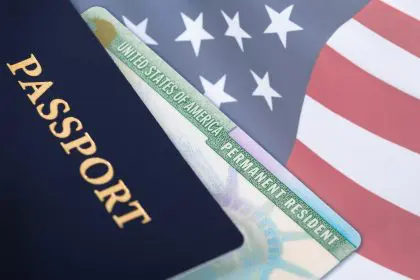The legacy of the transatlantic slave trade runs deep in the roots of Ghana, making it one of the most significant destinations for anyone wishing to trace the footsteps of enslaved ancestors and uncover family histories. The history of the African diaspora — particularly for those with roots in the Americas and the Caribbean — is intertwined with the lands of West Africa, with Ghana being at the heart of it. Today, there are numerous historical sites in the country where you can connect with this difficult past, reflect on the resilience of those who suffered through it and begin to piece together your family’s story.
Ghana provides a unique opportunity to retrace slave migration routes, offering deeply emotional and educational experiences. These journeys through historical landmarks and preserved heritage sites provide a way to honor the ancestors while acknowledging the scars of history. For those seeking to understand their lineage, visiting Ghana is more than just a trip — it’s a reconnection with heritage, culture and history. Here are seven of the best places in Ghana to retrace the steps of slave migration and explore your family history.
1. Cape Coast Castle
One of the most significant landmarks in the history of slavery — Cape Coast Castle — stands as a haunting reminder of the human suffering endured during the slave trade. Built by European traders, the castle was a major hub where captured Africans were held in horrific conditions before being shipped to the Americas. Today, it serves as a museum where visitors can explore dungeons that held enslaved people, reflecting on the immense tragedy that unfolded within its walls.
The most emotionally charged part of this visit is the “Door of No Return,” the last point enslaved Africans passed through before being shipped across the ocean. For descendants of enslaved people, standing at this site is both a solemn and powerful moment, marking a symbolic reconnection with their roots. Cape Coast Castle allows for a deep reflection on the brutal past while helping families trace the stories that began there.
2. Elmina Castle
Elmina Castle — located a short distance from Cape Coast — is another historical site central to the transatlantic slave trade. As the first European trading post in sub-Saharan Africa, it became a prominent location in the trade of enslaved Africans. Walking through the dark dungeons — where men, women and children were confined for months — provides a powerful understanding of the unimaginable suffering endured by ancestors.
For many, visiting Elmina Castle helps connect the dots of their family’s migration — uncovering parts of their history that were lost or untold. The castle — though a painful reminder of the past — also stands as a testament to survival, resilience and the enduring spirit of the African diaspora.
3. The Assin Manso Slave River
Located in central Ghana, Assin Manso is where captured Africans had their “last bath” in the river before being marched to coastal forts like Elmina and Cape Coast. This site — a somber and sacred place — provides a powerful connection to the ancestors who were once cleansed in these waters before their forced departure.
Today, Assin Manso serves as a memorial site — with the Slave River offering a poignant space for reflection. For those tracing family history, the waters of Assin Manso may evoke a deep emotional connection to the past — providing a sacred link between present generations and their forebears who passed through this very place.
4. Salaga Slave Market
The Salaga Slave Market — located in northern Ghana — offers insight into the less-known internal slave trade that occurred within Africa itself. Salaga was a significant slave market where enslaved Africans were sold to European traders for transport to the Americas.
Though the site is less developed than the coastal castles, visiting Salaga helps illuminate the broader scope of the slave trade and its internal workings. It is a critical stop for anyone exploring their ancestry — particularly for families whose roots may have been intertwined with this region’s history. A visit here sheds light on the different routes taken by enslaved people and opens the door to discovering forgotten chapters of history.
5. Fort Amsterdam
Fort Amsterdam — located in the town of Abandze — was another key site during the transatlantic slave trade. It served as a holding fort for enslaved people before their shipment to the Americas. In recent years, it has become a pilgrimage site for African Americans and those of African descent looking to reconnect with their heritage.
Visitors here often find it a more intimate experience compared to the larger castles. Fort Amsterdam has become a symbolic site of the diaspora’s return, allowing descendants to walk in the footsteps of their ancestors and retrace the migration routes that tore their families apart centuries ago.
6. The W.E.B. Du Bois Center
Though not directly a slave trade site, the W.E.B. Du Bois Center in Accra is an essential stop for those tracing family history. Named after the African-American scholar and civil rights activist who spent his later years in Ghana, the center celebrates the intellectual and cultural ties between Africa and the African diaspora.
Du Bois himself believed strongly in the idea of Pan-Africanism and the connection between African Americans and their ancestral homeland. Visiting this center allows for reflection not only on the legacy of the slave trade but also on the lasting bonds between Africa and its descendants in the diaspora. It’s a place to draw inspiration from the resilience and contributions of figures like Du Bois, who sought to rebuild those lost connections.
7. Akosombo Dam
Though not a traditional site of the slave trade, Akosombo Dam plays a unique role in the modern development of Ghana — symbolizing the future of the country post-colonialism. Built in the 1960s, it provides hydroelectric power to much of the country. For descendants of enslaved people visiting Ghana, Akosombo represents the resilience and progress of the people.
Reflecting on modern Ghana — from its painful history to its current growth — Akosombo offers a contrast between the nation’s tragic past and its future prosperity. Visiting the dam is an opportunity to witness the thriving legacy that follows centuries of exploitation and oppression.
Honoring the Past, Building the Future
Retracing the slave migration and uncovering family history in Ghana is a deeply emotional and transformative journey. It’s a pilgrimage that allows descendants to confront the brutal realities of their ancestors’ past while celebrating their strength, survival and legacy. By visiting these seven sites, families can piece together stories that have been lost to history, gaining not only knowledge but also a sense of spiritual reconnection.
Ghana offers a unique landscape where the painful chapters of the past are honored, and the resilience of the African diaspora is celebrated. As you walk through these historical landmarks, you are walking through the memories of countless live — lives that laid the foundation for future generations. Understanding and embracing this history is essential to healing, fostering a deeper connection to one’s lineage and building a future grounded in remembrance and respect.
This story was created using AI technology.











